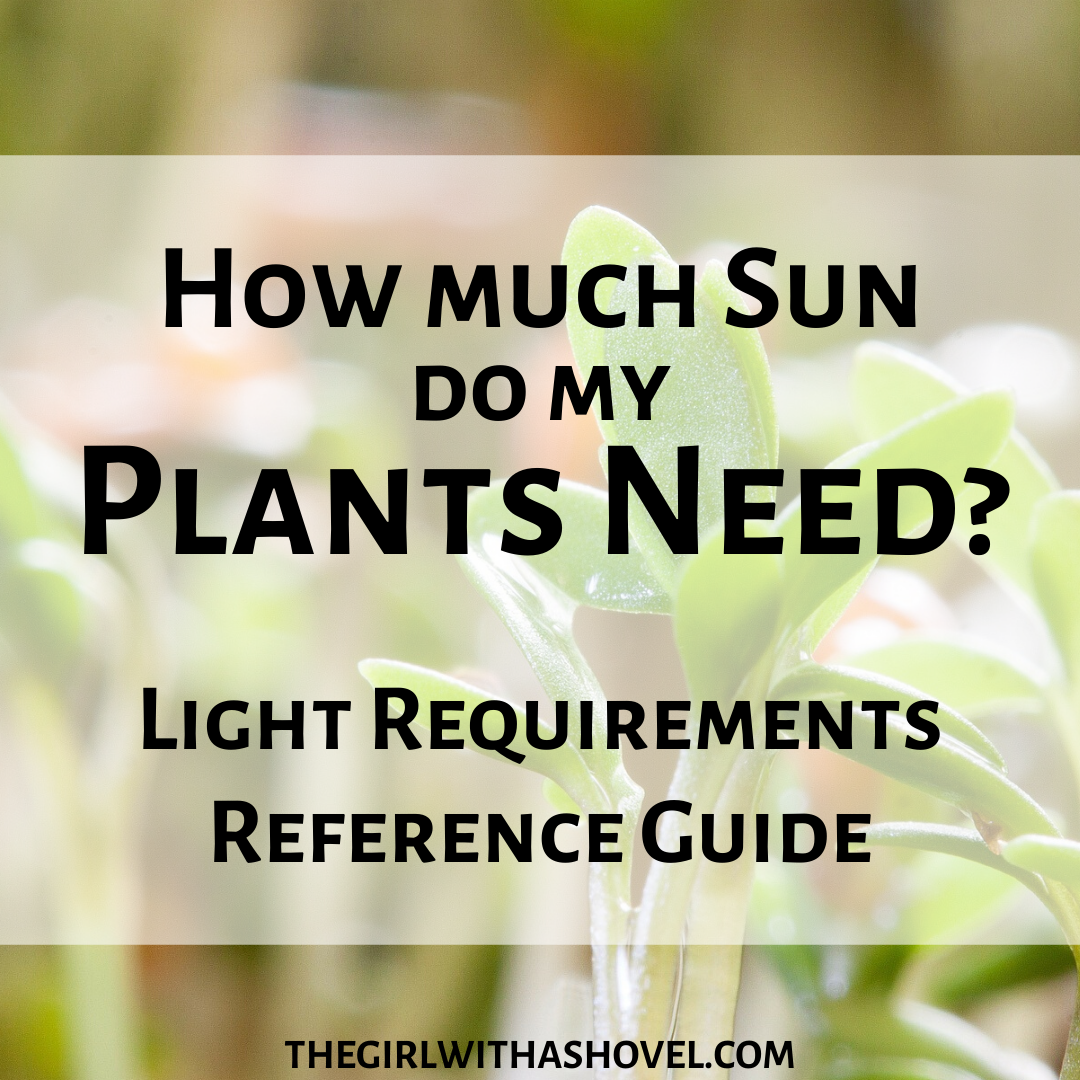A Reference Guide for Edible Plants
It is extremely difficult to remember exactly how much sun each of our different plants need. So that’s why I’m providing this awesome resource guide to you! Here’s a list of the most common fruits, vegetables, and herbs along with how much sunlight they each need… so you will never have to ask yourself “How much sun do my plants need?” again!!!
Vegetables – Light Requirements (in hours/day)
Artichoke 6-8 hrs
Arugula 6 hrs
Asian Greens 2-3 hrs
Asparagus 8 hrs
Beans 8-10 hrs
Beets 6 hrs
Broccoli 6 hrs
Brussels Sprouts 6 hrs
Cabbage 6 hrs
Carrot 6-8 hrs
Cauliflower 6 hrs
Celery 6 hrs
Chard, Swiss 8 hrs
Chicory (Radicchio) 4 hrs
Chinese Cabbage 5 hrs
Collards 5 hrs
Corn 6-8 hrs
Cucumber 8-10 hrs
Eggplant 8-10 hrs
Fennel 6-8 hrs
Garlic 6-8 hrs
Kale 6-8 hrs
Leek 4 hrs
Lettuce 8-10 hrs
Melons (Watermelon) 8-10 hrs
Mesclun 2-3 hrs
Okra 6-8 hrs
Onion 3-4 hrs
Parsnip 8 hrs
Peanut 8-10 hrs
Pea 6-8 hrs
Pepper 6-8 hrs
Potato 6-8 hrs
Radish 6 hrs
Rutabaga 6-8 hrs
Spinach 4-5 hrs
Squash, Pumpkins 8-10 hrs
Sweet Potato 6-8 hrs
Tomatillo 8-10 hrs
Tomato 8-10 hrs
Turnip 6-8 hrs
Fruits – Light Requirements (in hours/day)
Apple 6-8 hrs
Apricot 6-8 hrs
Avocado 6-8 hrs
Banana 8-10 hrs
Blackberry 6-8 hrs
Blueberry 4-6 hrs
Cherry 6-8 hrs
Citrus 8-10 hrs
Currant 6-8 hrs
Grape 7 hrs
Guava 8-10 hrs
Kiwifruit 8-10 hrs
Pear 8 hrs
Plum, Prune 8-10 hrs
Pomegranate 8-10 hrs
Raspberry 6-8 hrs
Strawberry 8-10 hrs
Herbs – Light Requirements (in hours/day)
Basil 6-8 hrs
Chives 6-8 hrs
Cilantro/Coriander 6-8 hrs
Dill 6-8 hrs
Lavender 6-8 hrs
Lemon Balm 4-6 hrs
Marjoram 6-8 hrs
Mint 4-6 hrs
Oregano 6 hrs
Parsley 5-6 hrs
Rosemary 6-8 hrs
Sage 6 hrs
Tarragon 6-8 hrs
Thyme 6-8 hrs
I hope you’ve found this reference chart helpful! Let me know in the comments if you have any more questions or if you want sunlight requirements for any other plants that I don’t have listed.
Happy Digging!


how deep you have to plant tomatoes + best time ? Can I plant tomatoes in a wine cave indide covered with plastic folie with holes for waterdrainage ?
Thans for answer
Laurent,
Thank you for your comment! Tomato plants can be buried as deep as you want, as long as you leave a couple stems of leaves at the top so it can still photosynthesize. The more stem you have buried, the more nodes you have that can produce more roots. As far as the planting I wasn’t quite sure what you meant, but tomato plants do enjoy being in a bit of soil so as long as it is large enough then it should be fine (don’t go any smaller than a topsy-turvy planter Lol!) If you are watering it once a day and it still is too dry, then you need to put it in a larger container! Hope this helps!